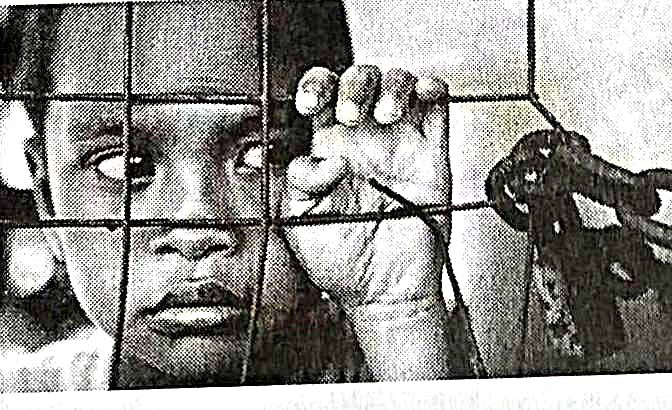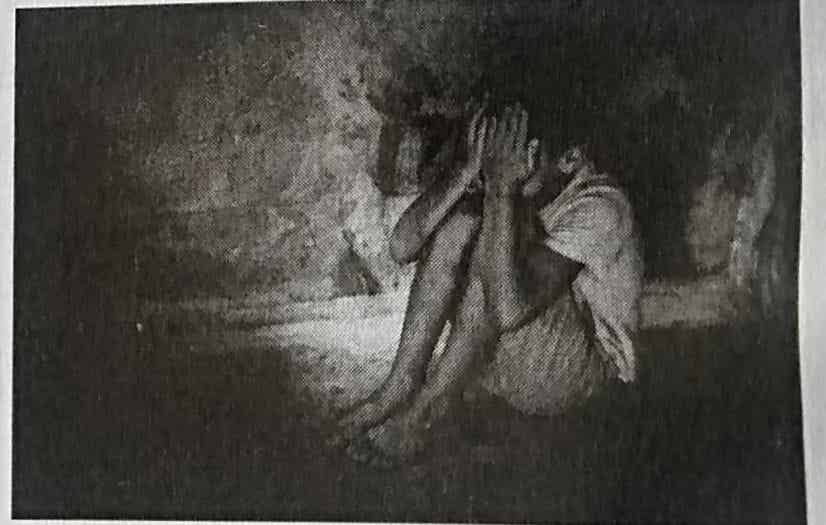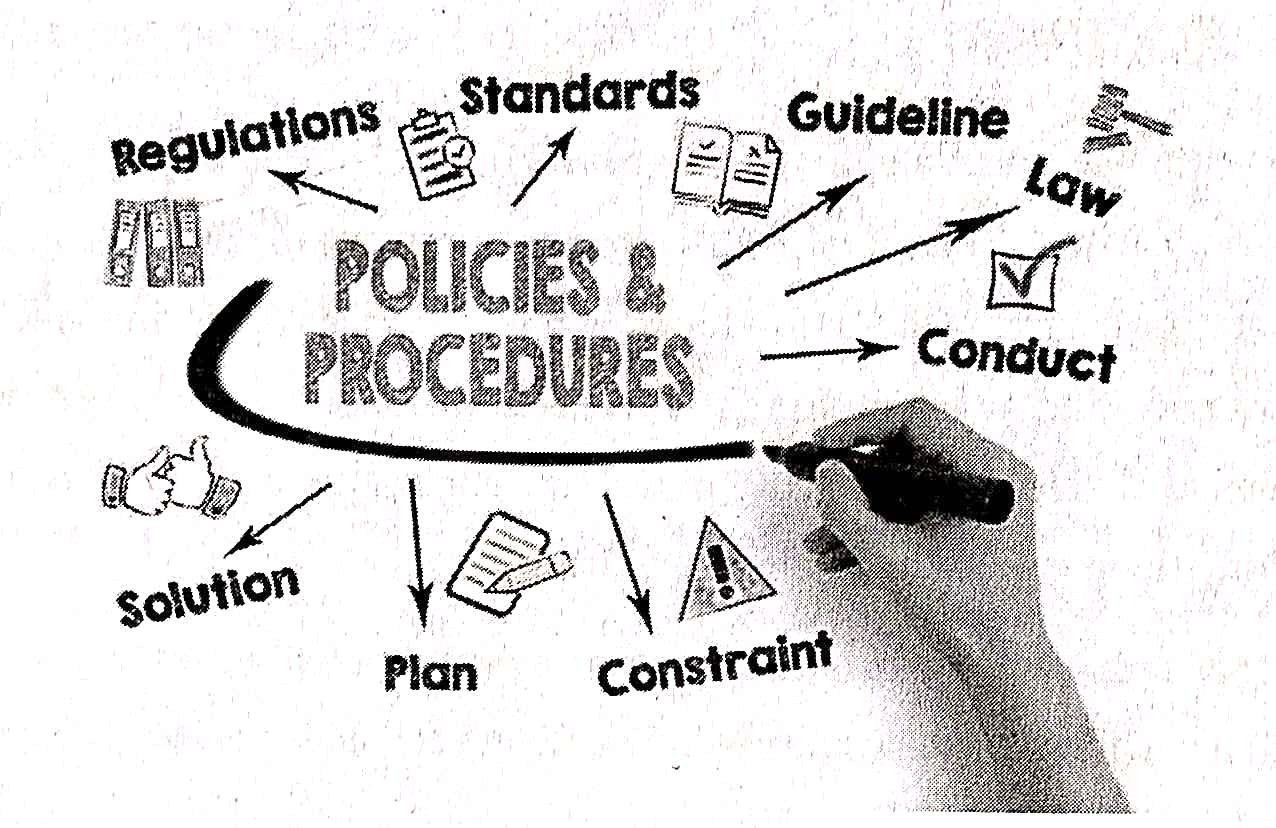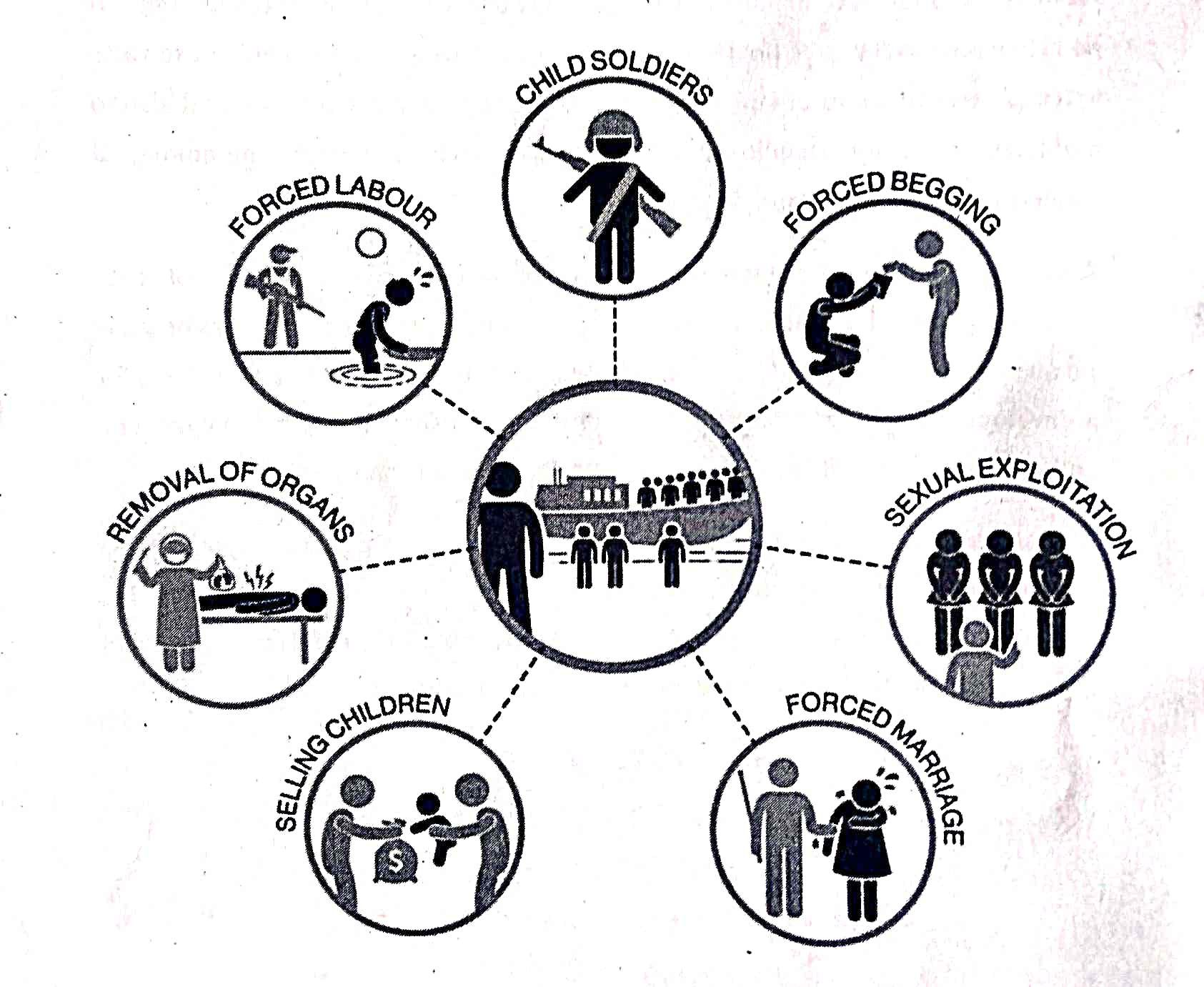Prevention and Protection from Human Trafficking Menace
Human Trafficking Menace
Trafficking in human beings can be seen as both a violation of human rights and a form of gender-based discrimination and violence against women and girls. Human trafficking involves the use of force, fraud or compulsion to obtain some type of labour or commercial sex act. Human trafficking victims can be of any age, race, culture, sex, gender, nationality, religion, socio-economic class etc. Individuals vulnerable to human trafficking include children belonging to below the poverty line, runaway and homeless youth, unaccompanied children, girls and women etc.
For Assam in particular, members of tribal communities, religious minorities and women and girls from excluded groups are most vulnerable.
Traffickers uses violence, manipulation or false promises of well-paying, marriage etc to lure victims into trafficking situations. They look for people who are susceptible for a variety of reasons, including psychological or emotional vulnerability, economic hardship, lack of a social safety net, natural disasters or political instability. Language barriers, fear of their traffickers and fear of law enforcement frequently keep victims from seeking help and thus make human trafficking a hidden crime.
In Assam, according to the figures presented by National Crime Records Bureau (NCRB), Assam recorded 201 cases of human trafficking in 2019. Out of the total trafficked victims, 80 were minors among which 56 were female. The number of victims above 18 years of age were 168 of which 132 were female. Whereas, the number dropped down to 124 in 2020 due to the pandemic that hit the entire nation.
(source:
https:/wwwhindustantimes.com./india-news/human-traficking-from-assam-worsens-during-covid-19-pandemic-rights-activists-10164241117751Z.htm)
This drop in the number is a glorious achievement for a state like Assam which has been a hub for human trafficking in the past but it is equally an alarming state and a matter of concern as post lockdown is a fearful situation for many, the lockdown and
restrictions have pushed millions to poverty and led to conditions which are fertile for human trafficking.
Relation between Human rights and Human Trafficking
Human trafficking is generally understood to refer to the process through which individuals are placed or maintained in an exploitative situation for economic gain.
Trafficking can occur within a country or may involve movement across borders. Women, men and children are trafficked for a range of purposes, including forced and exploitative labour in factories, farms and private households, sexual exploitation, and forced marriage. Human trafficking is despicable violence of human rights. The children have the right to survival, right to protection, right to development and right to participate. The issue of trafficking is to be addressed to a comprehensive strategy so that the victims and survivors get justice and rehabilitated. Despite having all the laws and policies to ensure the protection of right of children a lot remains to be done to ensure that services are effective.
Human rights most relevant to trafficking
- The prohibition of discrimination on the basis of race, colour, sex, language, religion, political or other opinion, national or social origin, property, birth or other status.
- The right to life.
- The right to liberty and security.
- The right not to be submitted to slavery, servitude, forced labour or bonded labour.
- The right not to be subjected to torture or cruel, inhuman, degrading treatment or punishment.
- The right to be free from gendered violence.
- The right to freedom of movement.
- The right to the highest attainable standard of physical and mental health.
- The right to just and favourable conditions of work.
- The right to an adequate standard of living.
- The right to social security
- The right of children to special protection.
Trafficking as a violation of human rights
As per the Constitution of India, there are six fundamental rights in India. They are Right to Equality, Right to Freedom, Right against Exploitation, Right to Freedom of Religion, Cultural and Educational Rights and Right to Constitutional Remedies.
Violations of human rights are both a cause and a consequence of trafficking in persons. Accordingly, it is essential to place the protection of all human rights at the centre of any measures taken to prevent and end trafficking. Anti-trafficking measures should not adversely affect the human rights and dignity of persons and, in particular, the rights of those who have been trafficked, migrants, internally displaced persons, refugees etc.
Promotion and protection of human rights
Taking steps to ensure that measures adopted for the purpose of preventing and combating trafficking in persons do not have an adverse impact on the rights and dignity of persons, including those who have been trafficked. State and other implied local authority should consider the following:
1. Consulting with judicial and legislative bodies, national human rights institutions and relevant sectors of civil society in the development,
adoption, implementation and review of anti-trafficking legislation, policies
and programmes.
2. Developing national plans of action to end trafficking. This process should be used to build links and partnerships between governmental institutions involved in combating trafficking and/or assisting trafficked persons and relevant sectors of civil society.
3. Taking particular care to ensure that the issue of gender-based
discrimination is addressed systematically when anti-trafficking measures are proposed with a view to ensuring that such measures are not applied in a discriminatory manner.
4. Protecting the right of all persons to freedom of movement and ensuring that anti-trafficking measures do not infringe upon this right.
5. Ensuring that anti-trafficking laws, policies, programmes and interventions do not affect the right of all persons, including trafficked persons, to seek and enjoy asylum from persecution in accordance with international refugee law, in particular through the effective application of the principle of non-refoulement.
6. Establishing mechanisms to monitor the human rights impact of
antitrafficking laws, policies, programmes and interventions. Consideration should be given to assigning this role to independent national human rights institutions where such bodies exist. Non-governmental organizations
working with trafficked persons should be encouraged to participate in monitoring and evaluating the human rights impact of antitrafficking
measures.
7. Presenting detailed information concerning the measures that they have taken to prevent and combat trafficking in their periodic reports to the State and Local human rights monitoring bodies.
8. Ensuring that bilateral, regional and international cooperation agreements
and other laws and policies concerning trafficking in persons do not affect the rights, obligations or responsibilities of States under international law, including human rights law, humanitarian law and refugee law.
9. Offering technical and financial assistance to States and relevant sectors of civil society for the purpose of developing and implementing human rights-based anti-trafficking strategies.
Common causes of Human Trafficking
Poverty
Poverty is one of the largest contributors to human trafficking. People in poverty are targeted by the traffickers by offering them a way to earn money, wherein they actually earn nothing and end up in becoming a slave.
Lack of education

Lack of education can lead to decreased opportunities for work in a living wage and, it can also lead to decreased knowledge of human rights. In the both the cases, people with lack of knowledge tend to be at greater vulnerability for human trafficking.
Demand for forced labour/ sex
The demand for cheap labour and commercialized sex led to opportunities for traffickers to exploit people. Traffickers make a large profit by producing goods and services through cheap or free labour and selling the products or services at a higher price. Similarly, commercialized sex is believed to be a lucrative market that allows traffickers to become the only profiter from their victims.
Lack of knowledge of human rights for vulnerable groups
Groups that are marginalized in society lack knowledge of human rights, thereby becoming potential victims of trafficking. Traffickers can prey on these marginalized groups because they lack knowledge on protection of the law enforcement, their families, and even the society they live in.
Lack of legitimate economic opportunities
When people lack legitimate economic opportunities, that can also lead to increased vulnerability to human trafficking. Groups that are especially vulnerable in this area are migrants without work permits, those who lack education, those who live in rural areas where there are less jobs available, as well as women and certain ethnic groups who may not be able to get jobs due to discrimination. Traffickers offer seemingly legitimate jobs to people who cannot get them otherwise, only to lure them into forced labour, sex trafficking, bonded labour etc.
Social factors and cultural practices
Cultural practice and social factors are a major cause of human trafficking. In marginalized group of people, bonded labour is witnessed as a means of way of paying off debt. Cultural and social factors can also lead victims not to speak up about being trafficked or who their traffickers are, especially if they come from groups who lack human rights protections.
Conflict and natural disaster

Conflict and natural disaster can lead to economic instability and lack of human rights, giving traffickers an advantage and making people more vulnerable to human trafficking situations. In conflict zones and wars, some rebel or military grOups will use
child soldiers. Additionally, both conflict and natural disaster can lead people to migrate out of their hometowns and home countries, making them more vulnerable to traffickers. And with increased economic instability, traffickers have opportunities to offer false job offers to people, leading them into trafficking situations.
Warning Signs of Human Trafficking
Schools are meant to be a safe place for the students to learn and grow and even more so for some students whose lives are otherwise characterized by instability and lack of safety or security. Schools can play an important role in helping students learn about and protect themselves from human trafficking. School administrators and staff need to be aware that cases of child trafficking are being reported in communities throughout the nation. No community under urban or rural, school, socioeconomic group or student demographic is protected. In these cases, school personnel are uniquely well positioned to identify and report suspected abuse and connect students to services, actions that can prevent trafficking and even save lives.
Everyone who is part of the school community such as administrators, teachers, bus drivers, clerks and other school authority members has the potential to be an advocate for child victims of human Trafficking. Thus, teachers at first must learn the indicators of the crime, its warning signs and how to respond when a student is an apparent victim. Some of indications or signs that a students may be a victim of human trafficking include:
- Frequent absenteeism from school.
- Looking malnourished.
- Displaying signs of physical injuries, bruises and abuse.
- Avoiding eye contact and social interaction.
- Lacking official identification documents.
- Poor physical or dental health.
- Untreated sexually transmitted diseases.
- Refraining from going into public places alone or speak for themselves.
- Record of frequent travelling.
Preventive measures at School to avoid Human Trafficking
Schools are one of the only places in a society where we have a unique touchpoint with almost every child. Because of that, teachers and education professionals are well positioned to support human trafficking prevention efforts and help child survivors. Strategies aimed at preventing trafficking at school should take into account several triggers associated with human trafficking and learn the root cause. Schools in collaboration with states and intergovernmental organizations should also take into account the factors that increase vulnerability to trafficking, including inequality, poverty and all forms of discrimination and biases. Teachers and school management should develop effective prevention strategies based on existing experience and accurate information for safety and security of school children.
a. Create a safe environment
Teachers should ensure students of a safe and secure environment within the school campus where they can go when confronted with fear and threats. They also need a secure base, a place where they feel secure to explore the world around them.
Students who feel more secure are less vulnerable to predatory people, who often fake aftection and provide a false sense of love as a tactic to lure kids into the world of human traficking.
b. Pay attention to triggers
Triggers may include words, tone of voice, facial expressions, smells, feelings or postures that are embedded in a child’s mind. And some can cause unexpected reactions in seemingly regular situations. Many children have been exposed to trauma, such as neglect or abandonment, physical, sexual or psychological abuse, loss of a loved one, refugee or war experiences. When these memories are triggered,
children feel distressed and unsafe. Thus, teachers should pay attention to such instances and help assist students.
C. Be inclusive
When teachers show synmpathy, empathy and kindness to their students, students are more likely to develop a strong sense of belonging in the classroom atmosphere. Without that sense of belonging, students might come to see themselves as
unworthy of attention and love, which hurts their self-esteem and makes them more vulnerable to the influence of traffickers.
d. Dispel misconception and stereotypes
Teachers and school management authority should provide all necessary
information and clear misconceptions or myths related to human trafficking. Effective anti-trafficking educaion, teaches students that traffickers are not just strangers or people belonging to another race or ethnicity. Traffickers are often friendly, charismatic, well-dressed and seemingly wealthy, and they may appear to be kind and warm. They may also be close family members and caregivers who exploit children in their care.
e. Use appropriate touch and tone Teachers often use touch and tone of voice to build connections with students. But many students who have experienced trauma are sensitive to touch and rather avoid it. Teachers must know how to use touch in a way that is reassuring and affirming such as an encouraging pat on the back, an occasional handshake which might help build a sense of safety and security in the classroom, building trust with students and making them less likely to fall prey to traffickers.
School management and teachers have several responsibilities regarding child trafficking and in order to be effective, they should consider the following measures
- increase staff awareness and educate staff on the nature of trafficking and on which youth are most vulnerable to it.
- increase parent and student awareness of the risks and realities of trafficking
- develop schoolwide policies and protocols for identifying and supporting trafficking victims.
Basic training on trafficking risk factors and indicators should be provided to school personnel, particularly those who work with students in higher-risk groups or staff
who by virtue of their positions are most likely to notice red flags. These school staff include school counsellors, bus drivers, special education teachers, attendance officers and school nurses. It is imperative that school personnel understand trauma-informed practices and how to apply them in situations where students who are victims of trafficking may be struggling with fear, shame and embarrassment. Suspending judgment and remaining open-minded is critical to creating a trusting relationship in which vulnerable students feel safe to reveal and seek support. In this context, teachers should keep in mind that counsellors or other designated trained specialists may need to meet with a student several times before the student feels comfortable sharing information.
In most cases, classroom teachers or other teaching staff who are concerned about a student should not question the student directly. Instead, they should take their suspicions to the designated counsellor or social worker who will investigate the issue on students-to-students basis.

Policies: Effective school policies should require that a trained counsellor or licensed social worker engage with the student to gather more information. Once a child victim is identified, it is imperative that all responding providers coordinate
intervention and support for the victim and assess whether other students on campus have been impacted.
Policies might address the following:
- Establishing social-emotional learning and positive school climate practices.
- Engaging in a group discussion process with parents and school staff to develop a consensus that human trafficking is a serious problem that requires a systemwide response.
- Offering trainings that address implicit bias and challenge common myths, both within and outside the sch0ol community, about how human trafficking looks and who can be involved in it.
- Training for all staff on risks and indicators and key staff more intensively.
- Incorporating age-appropriate lessons or messages about human trafficking
- Training parents and students on the forms that human trafficking takes place and how to avoid risk
- Ensuring campus security
- Partnering with community law enforcement and social service providers that are expert in human trafficking.
- Developing and training staff on protocols for reporting suspected human trafficking.
- Establishing safety plans and ongoing education plans with human
- trafficking survivors.
- Establishing procedures to obtain assurance that external services contracts (e.g, cleaning, building security, food service) are not exploiting their staff in ways that would constitute labour trafficking.
Protocols: To be ready to assist students affected by trafficking, school districts should consider developing a protocol similar to that used for reporting child abuse or sexual assault. Protocols may be simple frameworks or more elaborate decision that walk school staff through many possible contingencies, Regardless of its complexity, any protocol’s central purpose should be to guide school staff in responding to both suspected and confirmed cases of trafficking and should take into account individual states’ mandating reporting requirements.
Also Read – The Protection of Children from Sexual Offences Act, 2012

